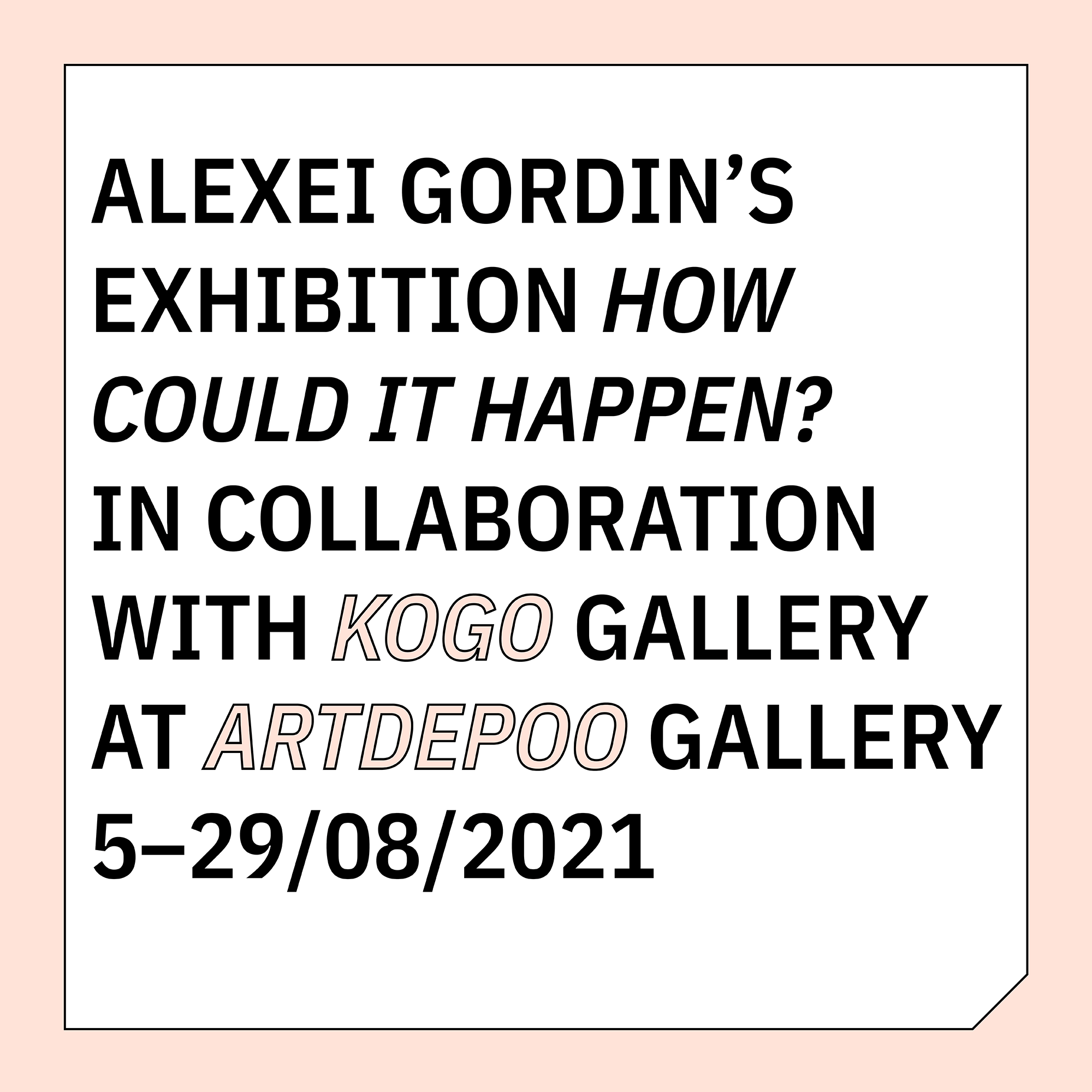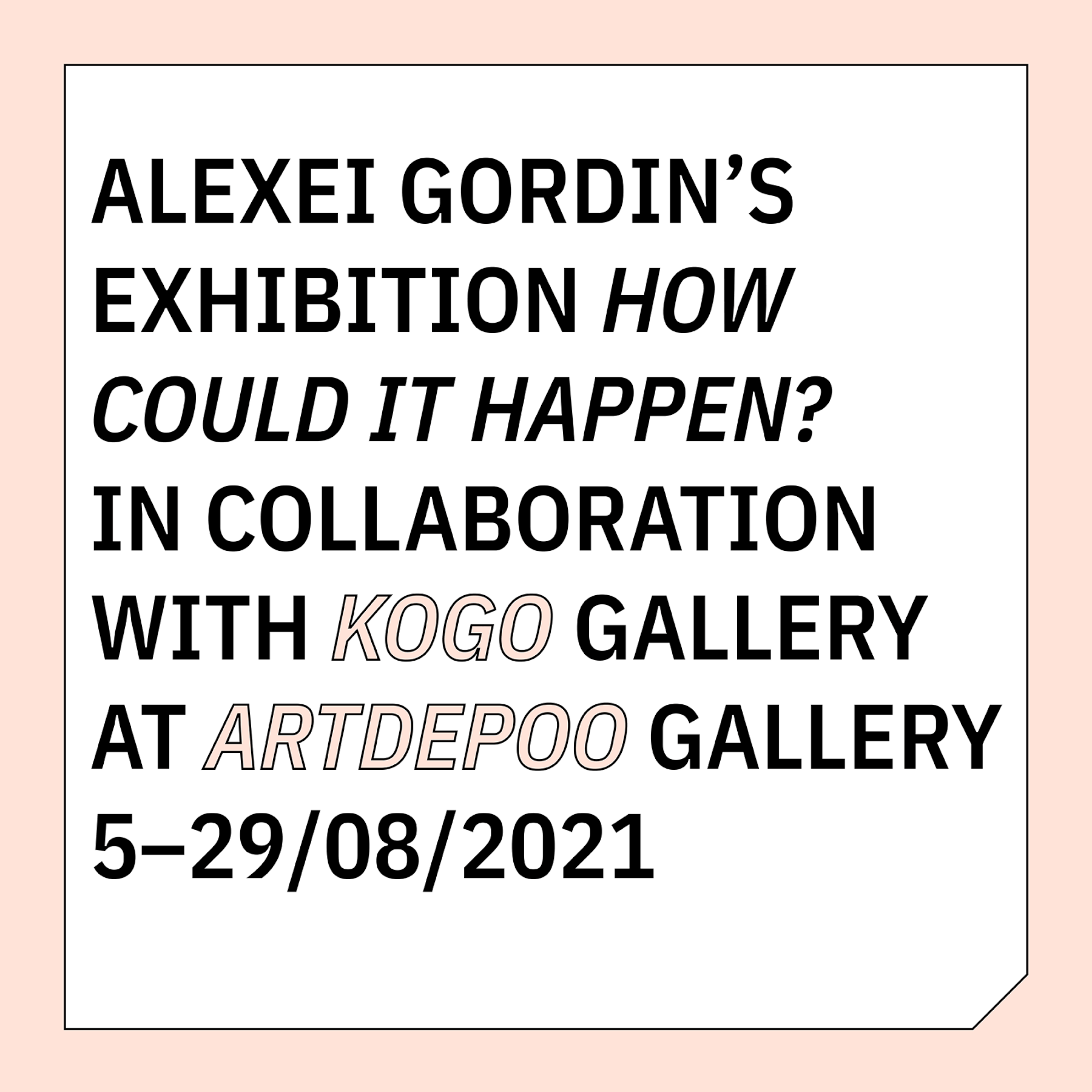How could it happen?
5.8.2021 — 29.8.2021
At ArtDepoo gallery
Jahu street 12-213, Tallinn
Open Mon – Fri 12–18, Sat 12–16
Creativity and criminality seem to be quite common in the same semantic environment. And in society, theyhave at least one thing in common: both creative and criminal networks are associated with innovation. Innovative cultural practices, alternative lifestyles and illegal economic relations are both alternatives to common sense and what is considered socially acceptable.
Pascal Gielen
Biologically, it is typical for humankind to gather into groups and it is hard to see society as a whole, just because there are too many tiny groups. One such group is the contemporary art scene, which functions as a safe environment for artists and art professionals. In connection with the active professionalization and capitalization of the art field, we can clearly separate the “art bubble” or the international art world. Despite the fact that art deals with actual problems and articulates the feelings of the modern man, it is still quite far away from reality and strongly isolated from what it speaks about. Society still sees the artist as a marginalized person through a certain amount of clichés that apparently came from the beginning of the 20th century when the artist was an aggressive rebel, far from what he has now become. The art scene has even become too calm and tolerant. There is only one fact that has remained the same: the artist is still the last person in market-based relationships. Though new art centres are built and new foundations established, the average artist has to develop alternative survival strategies just like a criminal does, as ironically mentioned by the Belgian sociologist Pascal Gielen.
The exhibition “How could this happen?” deconstructs the “art bubble” through the collision of two different worlds: one the silent, safe and isolated art world, the other a dangerous, aggressive, unpredictable reality, where the role of art has no significance. Many works represent the art world through the prism of violence. Street riots, vandalism, encounters with armed police are like sarcastic comments on the fact that the safety of the art world is actually just an illusion. The absurdity and contradictions of the real world step into a conflict with the professional art scene, which has its own dark side – artists’ poverty, instability and fear of tomorrow. In mainstream horror films, the horror itself often happens in the protagonist’s own home. The home is usually considered a safe environment, where we can always hide from the big world. The most fearful situation is when your own home becomes a source of danger.
The installation consists of numerous different snippets collected from social media, cultural and social fields, the artists’ observations, thoughts and self-projections. Artist and criminal are placed in the same line – together with the calm of the art world and the feeling of a catastrophe questioning our belonging to different groups and how we adapt to the fast-changing reality. Through the prism of the existence of the artist, the author meditates on global problems and how the creative individual is attached to a system that is not leaning on creativity but rather on strict mathematic structures. The protagonists in the artworks and their environment are endowed with symbolic meaning. Behind the factiousness of the art world, the question of the factiousness of social standards, in general, is concealed: how can we trust them and should we even?
Text: Alexei Gordin
The show “How could this happen?” includes the artist’s paintings and videos from 2019–2021, and this is Alexei Gordini’s 18th solo exhibition. The exhibition’s opening will take place on Thursday, August 5, from 7 pm to 9 pm. DJ NIKA will play the music and Kalamaja Brewery supports the event. Visitors who feel healthy are welcome. ArtDepoo locates in Tallinn at Jahu 12-213. The exhibition is open Mon – Fri 12–18, Sat 12–16 until August 29.
Alexei Gordin (1989) is mainly known as a painter; however, he also works with photography, video and performance. Using black humour, Gordin draws attention to the absurdity of the (art) world and alienation, highlighting inequality and the difficulties that marginalised groups experience. Gordin’s work is influenced by caricatures and combines text and pictures, referring to comics and meme culture.
Alexei Gordin is an artist represented in the Kogo gallery. He is currently participating in two group exhibitions: “Survival Kit for the Art Market” at the Kogo Gallery, which is open until August 14, and “New Age of Baltic” at the Art Corner H Gallery in Seoul, South Korea, which is open until September 4; on August 13, Gordin will take part in a discussion on contemporary art “Do you get it? Not quite. What contemporary art can give us“ at Arvamusfestival in Paide; Kogo gallery also presents Gordini’s video art from September 2 to 5 at Foto Tallinn art fair in Kai Art Center.
Thanks to ArtDepoo gallery, Kristiina Nurk, Komisjonikaubamaja ja Kalamaja brewery , DJ NIKA, Urmo Teekivi.


Press and Publications
Veel üks mõttetu kunstiarvustus näitusele, mida vaatama ei jõuta
Aleksander Metsamärt, Sirp, 13.08.2021
Alexei Gordin avab ArtDepoo galeriis näituse
05.08.2021, Postimees



 Survival Kit for the Art Market
Survival Kit for the Art Market